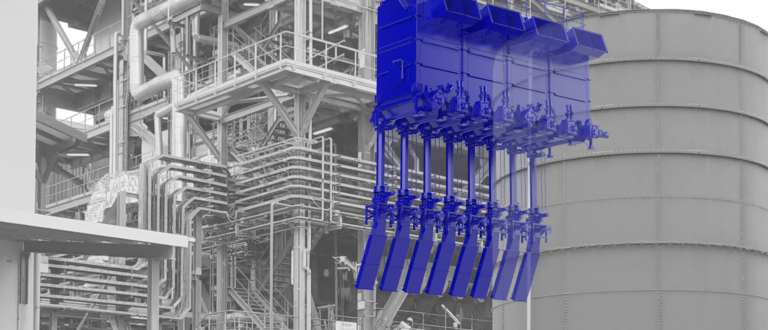The definition of the biomass feeding system was carried out in close cooperation with Laitex’s French sales representative, CNIM, which supplied the boiler, and Albioma. “We did a lot of research and modeling with the client and our partner in the pre-design phase of the plant. As our work progressed, we received praise for our expertise and flexibility. Our French sales agents’ local knowledge and common language facilitated communication,” says Sami Koskela from Laitex, who was involved in defining the project.
Accurate and safe fuel feeding system
In the past, the power plant used coal and bagasse left over from sugar cane processing as fuel. “When the fuel product is changed to a more efficient and cleaner burning pellet, the feeding system must be completely redesigned including the silo, dischargers and feeding devices. With the new system, the amount of fuel fed to the boiler can be precisely adjusted,” says Koskela.
The biopellets are brought from the plant’s receiving warehouse to the day silo, where they are fed to the boiler via screw dischargers and rotary feeders. It is not desired to break the pellets structure during transport so that it does not release flammable dust inside the conveyor. “A screw conveyor does not break the pellet and is a good choice for accurate dosing,” says Koskela.
Screw conveyors dispense material into the boiler at a certain capacity. The rotary feeders located in the boilers feeding tubes act as air locks and flash back arrestors: if a flame rises from the boiler along the feeding tube, it will not reach the pellet storage silo. However, emergency situations have been prepared for. “The equipment is designed so that if a dust explosion occurs in the day silo, it will be directed through explosion membranes to a safe direction and will not damage any structure of the feeding system,” Koskela continues.
Efficient and reliable power plant
The reform of the fuel feeding system will make the plant more efficient. “The old coal feeding system was originally simpler, which reduced the efficiency of the boiler. Now that the fuel feeding can be precisely adjusted, the boiler’s efficiency can be better utilized,” says Mikko Heinola, Laitex’s project manager, who was involved in the definition work and is responsible for the projects implementation.
We do not want to shut down the boiler unnecessarily: especially during tourist season, the supply of electricity and hot water must be secured, and the capacity of the backup power plant is not enough. All spare parts must be obtained from outside the island – it is challenging and time consuming, so malfunctions want to be avoided. “The plant is designed to operate so that one feeding line can be shut down if necessary. The equipment is only serviced during planned maintenance outages,” says Heinola.


Low-emission energy produced locally
The power plant will be reliable and efficient with the new feeding system. Laitex’s commissioning service ensures that the fuel feeding system meets the customer’s required performance guarantees and that the customer receives the desired return from their plant. “Laitex has 35 years of experience in transporting biomass and we have always cherished green, clean values. This was a project that felt true to us – we are looking forward to its launch,” Koskela concludes.
The reform of the fuel feeding system is part of France’s green growth targets for Guadeloupe and Albioma’s targets for giving up coal. It will reduce CO2 emissions of the Le Moule power plant by 87%. Renewing the plant to entirely biomass-based production will increase the island’s share of renewable energy in its total energy production to 35 percent. After the renovation, the plant will burn 100% locally produced biomass.

